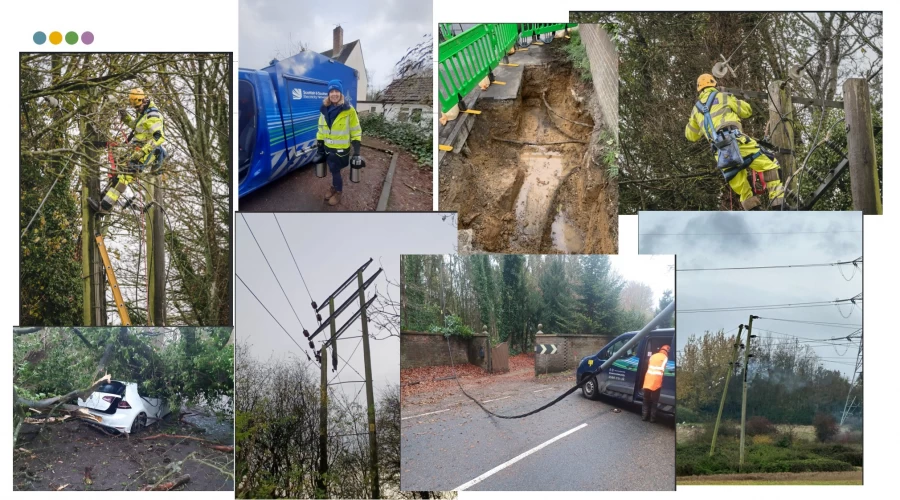Spotlight on SSEN - Storm Bert

STORM BERT
Storms are increasingly common in the UK; and the winter of 2024/25 was no exception. Our central southern England licence area - which has Wiltshire at its heart - experienced two named storms during November and December 2024; Storms Bert and Darragh.
Bert brought a prolonged period of severe weather, with high winds and heavy rain across our network region. Wind gusts of over 60mph were observed inland, leading to damage to our overhead electricity network from fallen trees, branches and other debris picked up by the wind.
Steady, persistent rain also fell throughout this unsettled period of weather. Rain has less direct impact on the overhead network, but it can affect the ground poles sit in, and flooding also makes getting to faults to repair them more challenging.
The increasing frequency of severe weather – which is linked to our changing climate - means we’ve bolstered our preparations for - and response to - storms.
Let’s consider our preparations first; these are the steps we take as we monitor the forecast in advance of severe weather arriving. Based on predicted severity, we make the following decisions:
- We cancel all planned works on the network; this frees up teams to respond to storm-related damage.
- We bring staff down from our North of Scotland licence area (unless they’re also expecting severe impacts from storms). We also speak to our contract partners, to secure further reinforcements.
- Everyone in the Distribution business assumes a storm role. This bolsters our call-handling teams, our backroom support, and our engineering response.
- We get in touch with our Priority Services customers in the areas likely to be affected; we provide them with practical information and advice on how they can prepare ahead of any disruption to their power supply.
- We speak to you – our fellow members of Local Resilience Forums – to let you know what we’re expecting and how we’re gearing up to respond. We amplify these messages on our social media channels, and in some circumstances in proactive communications to the media.
- We ensure our depots and vehicles are fully stocked with all the equipment they need to carry out repairs out on the network.
All these preparations aid our response hugely, but they’re not able to prevent the storm from resulting in customers losing power for a time. We invest hundreds of millions of pounds every year to ensure our network is stronger and more resilient, but in the face Mother Nature’s increasing might, some damage is often inevitable.
In light of this, how we respond to customers’ needs is critical. That journey often starts on the phone, when people call us to tell us their power is off, and to find out when it might be restored. During Storm Bert, we took 13,000 calls on our free 105 phone line. These were answered within 47 seconds on average. More than 6,000 customers got in touch with us on social media; they heard back from us within 9 minutes.
At the height of Storm Bert, 60,000 of our customers lost power; there were a total of almost 700 faults across our network. Yet all but 690 customers were back on within 24 hours of losing supply. This demonstrates not only the exceptional nature of this storm, but also our growing ability to respond quickly and decisively to reconnect our customers.
